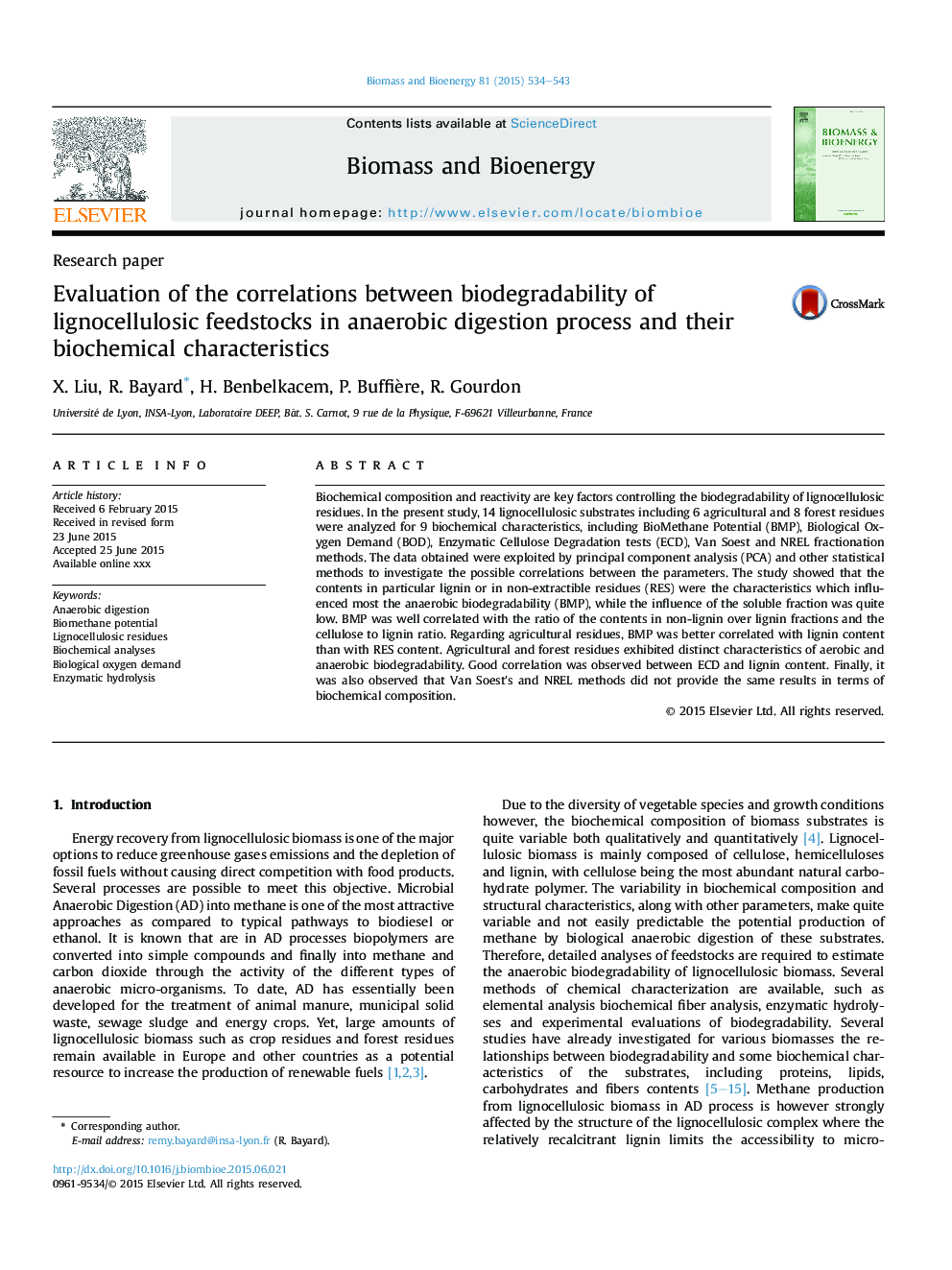| Article ID | Journal | Published Year | Pages | File Type |
|---|---|---|---|---|
| 7063891 | Biomass and Bioenergy | 2015 | 10 Pages |
Abstract
Biochemical composition and reactivity are key factors controlling the biodegradability of lignocellulosic residues. In the present study, 14 lignocellulosic substrates including 6 agricultural and 8 forest residues were analyzed for 9 biochemical characteristics, including BioMethane Potential (BMP), Biological Oxygen Demand (BOD), Enzymatic Cellulose Degradation tests (ECD), Van Soest and NREL fractionation methods. The data obtained were exploited by principal component analysis (PCA) and other statistical methods to investigate the possible correlations between the parameters. The study showed that the contents in particular lignin or in non-extractible residues (RES) were the characteristics which influenced most the anaerobic biodegradability (BMP), while the influence of the soluble fraction was quite low. BMP was well correlated with the ratio of the contents in non-lignin over lignin fractions and the cellulose to lignin ratio. Regarding agricultural residues, BMP was better correlated with lignin content than with RES content. Agricultural and forest residues exhibited distinct characteristics of aerobic and anaerobic biodegradability. Good correlation was observed between ECD and lignin content. Finally, it was also observed that Van Soest's and NREL methods did not provide the same results in terms of biochemical composition.
Keywords
Related Topics
Physical Sciences and Engineering
Chemical Engineering
Process Chemistry and Technology
Authors
X. Liu, R. Bayard, H. Benbelkacem, P. Buffière, R. Gourdon,
